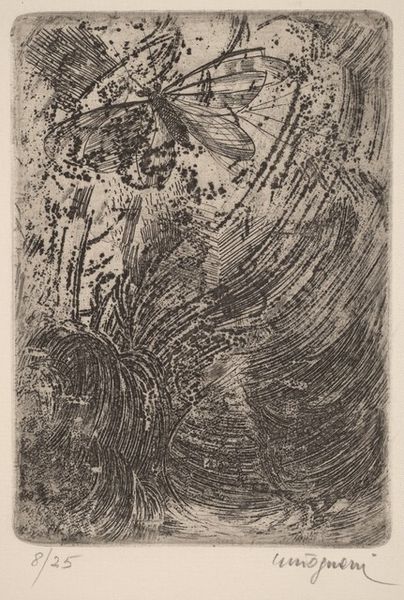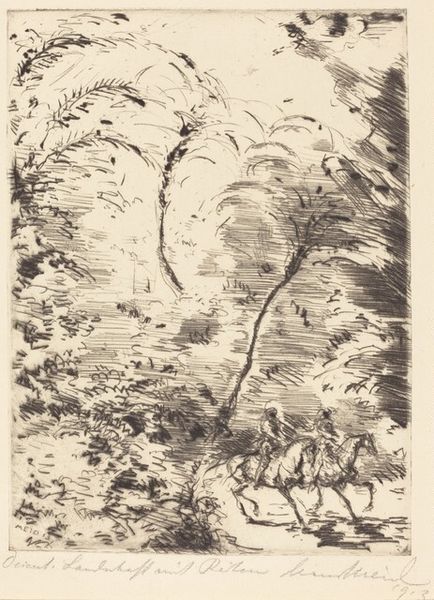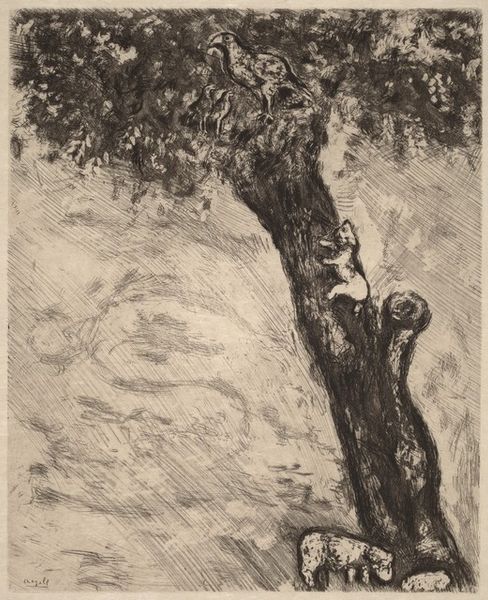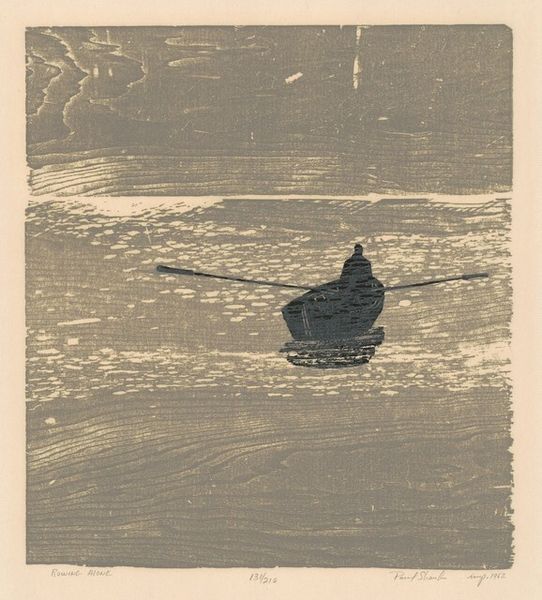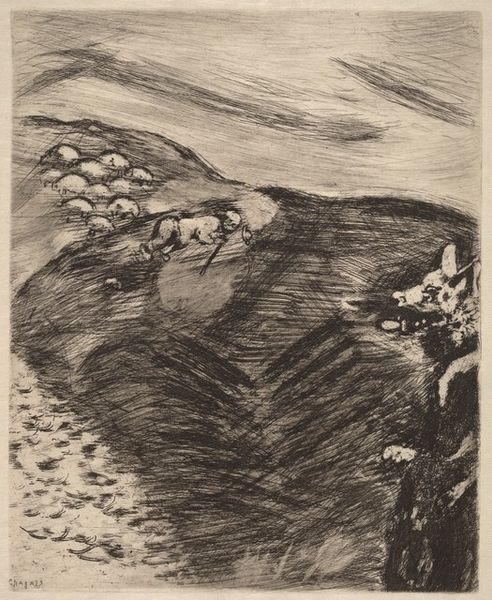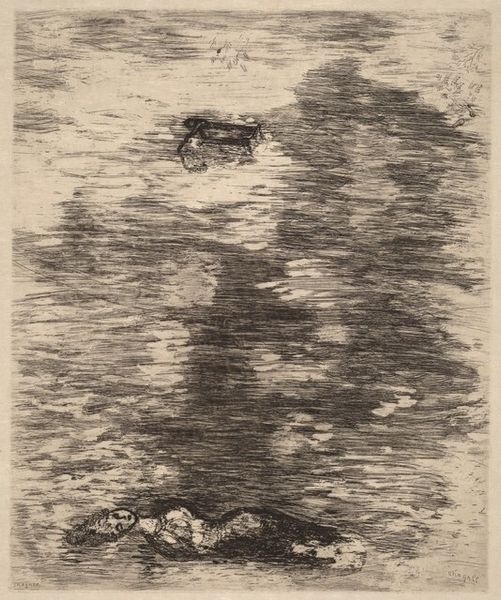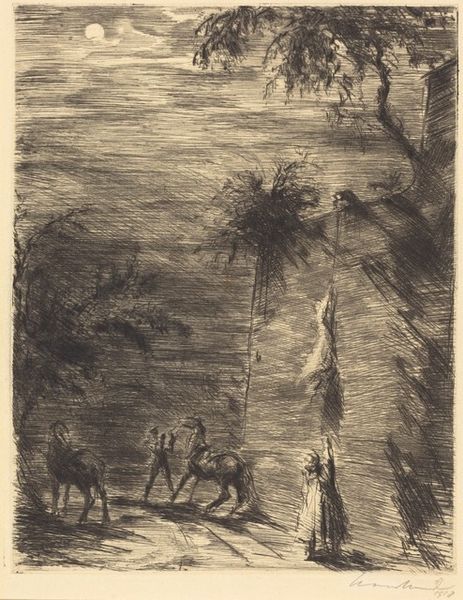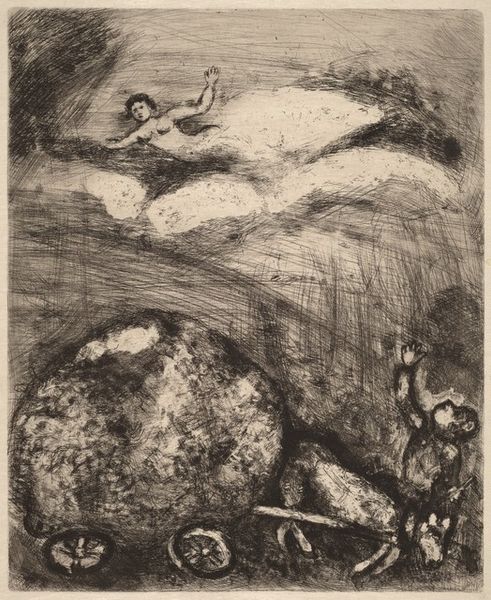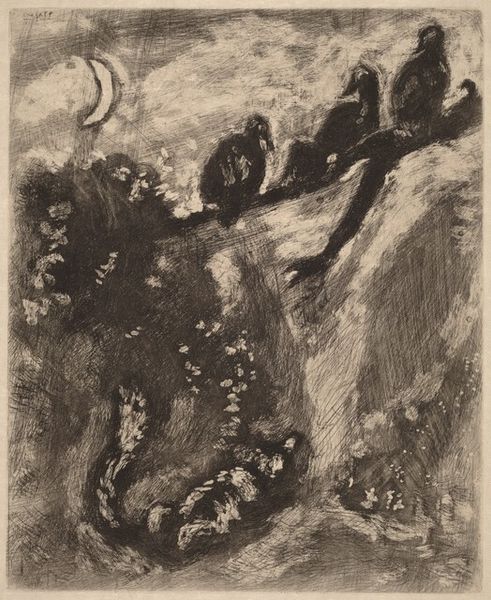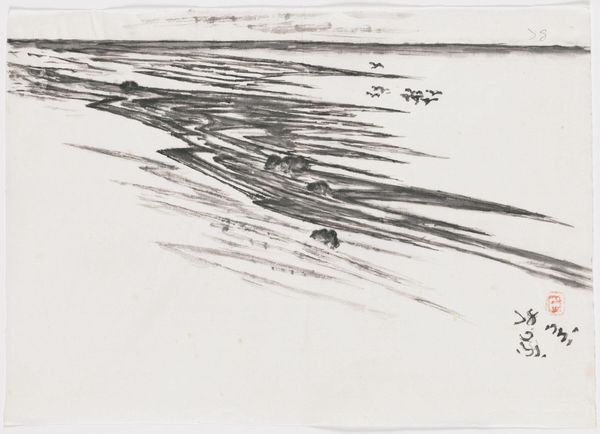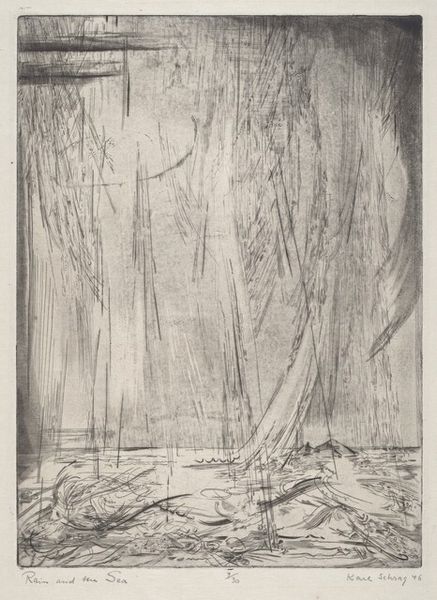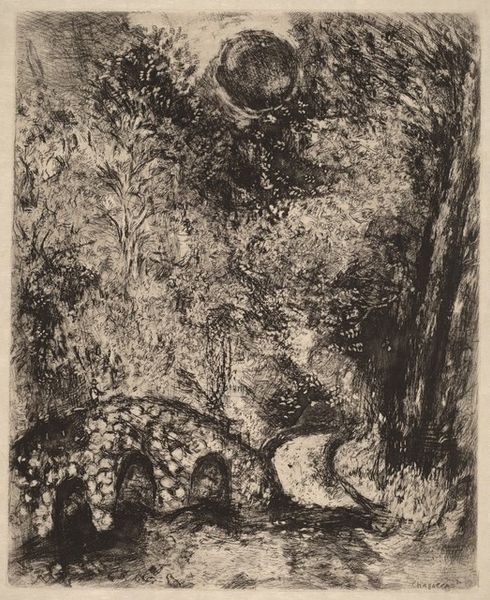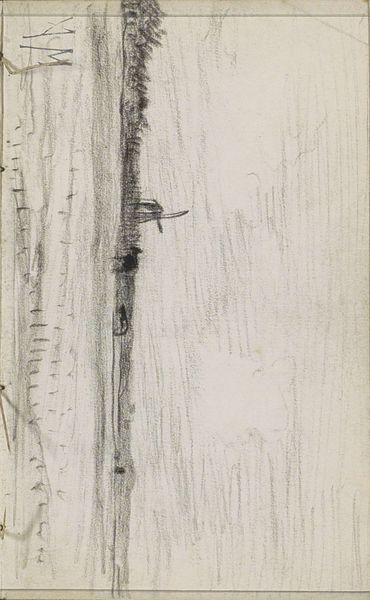
drawing, print, etching
#
drawing
#
narrative-art
# print
#
etching
Copyright: National Gallery of Art: CC0 1.0
Editor: This is "The Little Fish and the Fisherman" by Marc Chagall, made sometime between 1927 and 1930. It's an etching, so printed on paper. There’s almost a dreamlike quality to the composition… I’m struck by how the fisherman and fish seem equally prominent. What do you make of this etching? Curator: This etching resonates deeply with universal, almost archetypal, narratives of pursuit and consequence. Look at how Chagall doesn't simply depict a fishing scene. It's loaded with symbolic weight, isn’t it? Consider the fisherman's oversized profile against the smaller, vulnerable fish. What emotional power dynamic do you see? Editor: Well, at first glance, the fisherman appears dominant. But the fish is centered and seems almost… defiant? Is Chagall questioning traditional power structures? Curator: Exactly! Think about the historical context. Chagall, like many artists of his time, wrestled with themes of displacement and identity. The fisherman, traditionally a figure of authority, here could symbolize oppressive forces. The fish? Perhaps the individual spirit fighting against those forces. The water rendered so turbulent— is it just water or emotional turmoil? Editor: That makes me think of the tree in the upper left corner, bare and almost clawing at the sky. It echoes that feeling of struggle. Curator: Precisely! Everything contributes. The very act of etching, scratching into the plate, mirrors the often painful process of carving out one's existence. It invites us to contemplate the eternal dance between hunter and hunted, the powerful and the vulnerable. Editor: It’s amazing how much narrative Chagall packs into what seemed, at first, like a simple scene. Curator: And it demonstrates the lasting resonance of visual symbols across time. Even a seemingly simple image carries echoes of cultural memory and shared human experience.
Comments
No comments
Be the first to comment and join the conversation on the ultimate creative platform.
